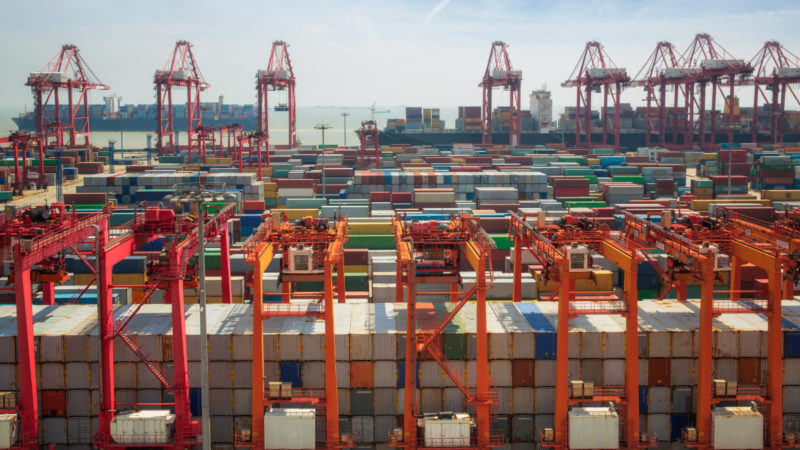-
The landmark Regional Comprehensive Economic Partnership (RCEP) agreement was signed by ASEAN, Australia, China, Japan, South Korea, and New Zealand on November 15
-
Mega trade deal covers a market of 2.2 billion people with a combined size of US$26.2 trillion or 30% of the world’s gross domestic product
-
The deal will improve market access, eliminate tariffs and quotas in over 65% of goods traded, and make business predictable
-
RCEP will give much-needed boost to initiatives on the swift and robust recovery of Asia-Pacific from the COVID-19 crisis
The Association of Southeast Asian Nations (ASEAN), Australia, China, Japan, South Korea, and New Zealand have signed the much-awaited Regional Comprehensive Economic Partnership (RCEP) Agreement after years of negotiation.
After talks started in 2012, trade ministers of the participating countries concluded the landmark mega-trade deal with a virtual signing on November 15.
The RCEP is one of the biggest trade deals in history, covering a market of 2.2 billion people with a combined size of US$26.2 trillion or 30% of the world’s gross domestic product.
“The signing of the RCEP Agreement is a historic event as it underpins ASEAN’s role in leading a multilateral trade agreement of this magnitude, despite global and regional challenges and eight years of negotiations,” ASEAN secretary-general Dato Lim Jock Hoi said in a statement.
“RCEP will give a much-needed boost for a swift and robust recovery for businesses and peoples in our region particularly during the current COVID-19 pandemic crisis,” he added.
The deal, upon entry into force, will improve market access with tariffs and quotas eliminated in over 65% of goods traded, and will make business predictable with common rules of origin and transparent regulations. This aims to encourage firms to invest more in the region, including building supply chains and services, and to generate jobs.
According to Philippine Trade Secretary Ramon Lopez, the signing of the RCEP agreement is a welcome development for the Philippines as it aligns with the country’s initiatives and reforms in building a more robust and conducive investment and business environment, especially as the country copes with the impact of the pandemic and works towards recovery.
“The RCEP will further broaden the Philippines’ economic engagements with its trading partners through improved trade and investment, enhanced transparency, integrated regional supply chains, and strengthened economic cooperation,” Lopez said in a separate statement.
“This agreement will also complement ongoing programs and policies to make the country a manufacturing and investment hub in the region,” the trade chief added.
RCEP was launched in November 2012 with the objective to establish a mutually beneficial economic partnership that will facilitate regional trade and investment, and bring market and employment opportunities to businesses and people in the region. The RCEP agreement will work alongside and support an open, inclusive, and rules-based multilateral trading system.
India withdrew from negotiations in November 2019 but a fast-track accession process is in place should the Asian country wish to rejoin RCEP in the future.
RCEP has 20 Chapters, 17 Annexes and 54 schedules of commitments covering market access, rules and disciplines, and economic and technical cooperation.
A chapter dedicated to support micro, small, and medium enterprise (MSME) development is a key feature of the trade pact, and is expected to facilitate the integration of MSMEs into the global value chain.
Lopez clarified, however, that while the wider free trade agreement improves levels of market access among RCEP participating countries, it still provides flexibilities, through the exclusion list, for the Philippines’ sensitive products, which are mostly agricultural products.
Trade assistant secretary and lead negotiator for the Philippines Allan B. Gepty said the signing of the RCEP agreement will be a catalyst for the country’s economic development by providing enhanced market access for Philippine key products such as garments, automotive parts, and agricultural products like canned food and preserved fruits.
Moreover, he said, it will also be “a platform for more investments in the country in vital sectors such as manufacturing, research and development, financial services, game development, E-commerce, and the IT-BPO sector.”
Skilled Filipino professionals and businesspersons will likewise gain from easier entry in the RCEP countries, he added.
With the implementation of the agreement, Lopez said RCEP will “bring job opportunities for the Filipinos in the country as it facilitates inclusive and open regional economic policies, especially for MSMEs, who can take advantage of the increasing globalization and creation of new supply chain linkages. In addition, it opens up more services that can be provided by Filipinos or Filipino companies in the RCEP participating countries.”
In 2019, RCEP participating countries accounted for 50% of the Philippine export market, and 61% of Philippine import sources. The region accounted for 11.4% of foreign direct investments entering the Philippines in the same period.





